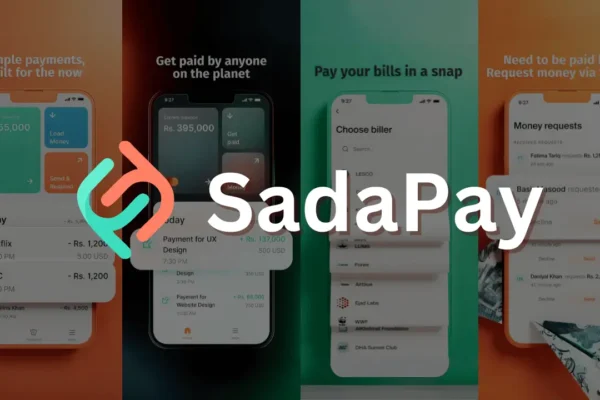Google Bard AI is one of the most advanced conversational AIs developed by Google in terms of technological advances. Bard is built upon the technological foundation of machine learning and natural language processing, seeking to mimic human chat. In this way, it can offer responses that are not only factual but clinically relevant at any time.
Fundamentally, the technology represents a giant step forward in making digital interactions more natural and convenient. In this way, Google brings AI into closer alliance with human speech through the medium of Bard. This conversational AI ushers in a new era where humans can talk with technology, eliminating communication obstacles between humans and machines to make users’ experiences more convenient.
Explore more about the evolution of conversational AI and its impact on user experiences in our related article on ChatGPT.

The Evolution of AI in Communication: From Simple Bots to Bard
Artificial intelligence communication has seen explosive growth. In the initial wave of industrial-strength interaction, early AI chatbots depended on simple scripts. These conversational agents became increasingly complex as machine learning algorithms developed. They moved from rule-based discussions to conversations that are more nuanced and context-aware. Today, Google Bard represents the culmination of this evolution. The same as LaMDA (Language Model for Dialogue Applications), it engages in exciting, fast-paced dialogues with far superior understanding and responsiveness.
How Google Bard Works: An in-depth look at its AI mechanisms.
Google Bard is based on the cutting-edge LaMDA (Language Model for Dialogue Applications) technology. To understand and generate human-like text, LaMDA was trained on huge amounts of data using sophisticated algorithms. It operates as follows:
- Data Absorption: Google Bard takes enormous amounts of textual data, reading (or rather ingesting) books and websites alike to learn from a huge range of sources. In this way, it builds up its knowledge of language.
- Pattern Recognition: With deep learning, Bard detects complex patterns buried in the raw data. It finds linguistic structures and nuances everywhere within it.
- Predictive Modeling: Regarding input, the AI predicts how text will most likely continue in the future; responses are grammatically and contextually relevant.
- Refinement and Feedback: While Bard interacts with humans, based on feedback from users, it is refined and optimized for accuracy and relevance.
Thus, the system is a web of sophisticated, ever-changing algorithms that generate conversations as similar to human interactions as possible.
Google Bard and the Implications for User Interaction and Engagement
The way Google Bard is introduced has a tremendous impact on users ‘interaction and attention. Its high-tech AI capabilities provide smooth, interactive dialogue similar to that of a human conversation. Users interacting with Bard get fast answers tailored to the current context, reinforcing deeper conversation. This responsiveness improves user satisfaction and retention.
Furthermore, the real-time comprehension and response to a large number of topics and inquiries by Google Bard makes for an even more interactive atmosphere, so that users will engage more. Bard helps companies have more clicks and greater interaction, a core element in their customer engagement strategy.

Comparative Analysis: Google Bard vs. Competing AI Chatbots
Google Bard steps into the ring as a powerful new talent in AI chatbots, with all of that data from Google Search. By contrast, rivals such as OpenAI’s ChatGPT use GPT-3.5, which is mainly concerned with pre-existing knowledge databases up to their last update. Bard’s real-time search integration potentially offers newer views and more current information. It also attempts to create a conversational and natural interaction interface that may be even more user-friendly than others. Bard also makes use of Google’s LaMDA technology, which creates a more refined and complete response to drive conversational AI. But the competition is still tough, with AI chatbots developing ever more capabilities and specializations.
Google Bard and the Personalization of the User Experience
With the assistance of AI, Google Bard customizes each user’s experience. It studies past queries, user preferences, and behaviors to forecast needs and respond appropriately. With machine learning, Bard is constantly upgrading. It provides users with a customized journey that feels natural and seamless. The technology surmounts the nuances of language and cultural settings to have a personable dialogue, giving digital experiences more human characteristics. By taking part in a dialogue with the Google Bard, users receive an individually tailored response. A future is being constructed where technology understands us as well as we understand ourselves.
The Technology Behind Google Bard: Exploring Machine Learning Models
Google Bard is based on highly advanced machine learning models for natural language understanding. The core technology draws from:
- LaMDA: Built by Google, the Language Model for Dialogue Applications is made specifically to answer requests in a natural way that is tailored precisely toward what the conversation needs.
- Transformer architecture: Bard’s neural network design allows words to be processed regarding each other at the same time, which aids in maintaining the sense of flow within the conversation.
- BERT: This feature, provided by Bidirectional Encoder Representations from Transformers (BERT), permits the analysis of words in context; as a result, it helps make interpretation more accurate.
- Reinforcement Learning: Its output is refined through feedback, to improve both accuracy and relevance.
- T5 (Text-to-Text Transfer Transformer): It makes it possible to translate input in natural language into understandable answers that cover a variety of tasks from translation.
These technologies are used by Google Bard, which transforms them into conversational AI modeled on human interactions.
Potential Applications of Google Bard in Various Industries
- In medicine, Google Bard can assist medical professionals’ needs for up-to-date information to be used in diagnostic procedures or therapy.
- It could bring more personalized learning into education, the idea being that Bard can tailor resources and tutoring to individual students ‘needs, setting things up to make for a more flexible system.
- Chatbots that can respond cleverly to various customer inquiries and resolve complicated problems gracefully could be the fruit of Bard’s labor. Could this help raise client satisfaction? Perhaps the customer service industry will make use of it too.
- Boosting creativity with AI-inspired suggestions In creative industries, Bard could help devise ideas and scripts or work together on projects to create inspiration.
- Financial services can use Bard to capture market trends and offer investment advice, or it may streamline financial reports as part of the effort to improve efficiency.
- The tourism and hospitality industries could use Bard to provide personalized recommendations and itineraries to tourists according to their likes, dislikes, and past behaviors.
Google Bard will be integrated across all these sectors, which should make operations run smoother, users feel more comfortable when using services, and decisions easier to make through the use of advanced conversational AI.
Privacy and Ethical Considerations in the Use of Google Bard
Google Bard’s appearance on the conversational AI scene also brings up major privacy and ethical issues. Second, the risk of data misuse is high because these are personal conversations that could easily be mined for information. Since trust is essential in user-AI interactions, users must consent to data collection and understand its scope. Anonymization is essential to protect privacy, but it must stand up against de-anonymization.
Second, the echo chambers formed by algorithmic biases can skew understandings and strengthen prejudices. Detection, prevention, and transparent algorithms are needed to make sure that such biases won’t come into play in user interaction with Bard.
In the end, deepfakes and misinformation derived from AI-generated content mean that verification tools are required to maintain confidence in digital discussions. Bard will continue to shape the future of communicating AI head-on if we address these issues.
Integrating Google Bard with Other Google Services and Platforms
Google’s integration of Bard with its other services makes for a more smoothly functioning user experience and increases productivity. Google Workspace users can now use Bard as an AI assistant to draft emails in Gmail, produce reports for Sheets, or create presentations from Slides. The advantage of Bard being integrated into Google Search would be to offer a deeper, conversational response to complex questions. Bard’s summarizing and note-taking skills could be of use in collaborating tools such as Google Meet. Also, with Google’s advanced security protocols in place, integrations across platforms are architected to keep user data secure while making it easy for users to employ AI-enhanced workflows.
Challenges and Limitations of Google Bard in Current Technology
While Google Bard represents a leap forward in AI-driven communication, it contends with several hurdles:
- Data Privacy: Keeping users ‘conversational information private is the most important part. This complex challenge exists in both its deployment and use.
- Contextual Understanding: In more complex dialogue situations, the AI may have trouble with nuanced human context, and its responses might be misguided or inappropriate.
- Technical Constraints: With large volumes of users, possible limitations in power and efficiency on the processing side may affect Bard’s response speed and scalability.
- Bias and Fairness: AI models naturally pick up the biases inherent in their training data and can thus perpetuate stereotypes or even generate lies.
- Innovative Competition: In a highly competitive space in which rivals like OpenAI’s ChatGPT are constantly getting better, Bard has some catching up to do and will be constantly striving for improvement.
While these limitations are reminders that Google Bard has great promise, much work remains to turn this into a full-fledged AI communication tool.
The Future of Google Bard
As soon as Google Bard continues to mature, its capacity for context understanding and nuanced generation will become increasingly refined. And Google will likely integrate Bard further into its ecosystem, expanding it to devices and services. Such cross-platform functionality can enhance the user experience and strengthen productivity tools. As these improvements continue, Bard may be able to provide personalized learning and complex problem-solving capabilities. Furthermore, with increasing concerns over privacy and ethical uses of artificial intelligence (AI), if Google helps Bard stand as an icon for user trust in AI, that will only serve to enhance the company’s competitive advantage.
Conclusion
Google Bard represents a giant step toward AI-based communications and could even change how people interact with technology. Its superior language models provide high-definition dialogue capabilities, forming a bridge between the humanistic nature of conversation and AI’s efficiency. Thanks to the breakthroughs it can utilize in such groundbreaking technology, Google Bard not only makes digital communication even better but also serves as a forerunner for developing its sense and consciousness. In essence, Google Bard is not just a chatbot; it’s an instrument that drives the future of AI dialogue and its application in everyday life.










One thought on “How Google Bard AI is Better and easier to use?”